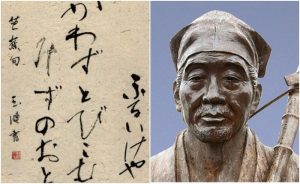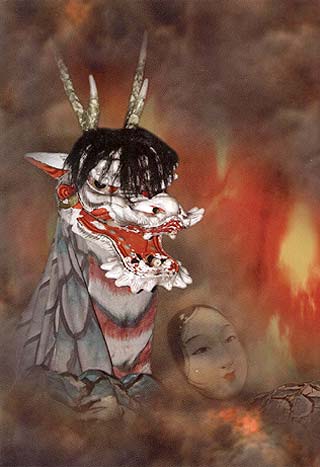How Samurai’s son Matsuo Basho glorified the Japanese three-song haiku all over the world
 Haiku (hoku) remains popular largely due to the fact that it perfectly conveys the subtexts of the funny, allows you to achieve funny understatement – a couple of expressive touches, a reference to the mysterious oriental nature – and the joke is ready. But when the haiku, which was originally called “hoku”, appeared in Japanese culture, his role was just that – comic. But thanks to the poet Matsuo Basho, the haiku genre has risen to the very heights of Japanese art – it turned out that “the haiku space is infinite and can contain the whole world”, in the words of another famous haiku author, or haijin, Masaoka Shiki.
Haiku (hoku) remains popular largely due to the fact that it perfectly conveys the subtexts of the funny, allows you to achieve funny understatement – a couple of expressive touches, a reference to the mysterious oriental nature – and the joke is ready. But when the haiku, which was originally called “hoku”, appeared in Japanese culture, his role was just that – comic. But thanks to the poet Matsuo Basho, the haiku genre has risen to the very heights of Japanese art – it turned out that “the haiku space is infinite and can contain the whole world”, in the words of another famous haiku author, or haijin, Masaoka Shiki.
The roots of Japanese poetry, as befits everything that this culture is famous for, go back to the deep past. The genre from which haiku emerged is considered to be poetry of ranga, or tanka – in the form of five verses, including exactly 31 syllables. This form of versification has been known in Japan since the VIII century. And haiku was singled out in a separate genre of poetic art in the 16th century.
At first, the three verses were in the nature of a comic work, considered the “easy” genre of poetry, but since the 17th century the meaning of haiku has changed – the reason was the work of the poet Matsuo Basho, who is considered the main poet of this genre in its history.
Matsuo Dzinsichiro, the future poet of Basho, was born into the family of a poor samurai in 1644. From an early age he was interested in poetry, which by that time was available not only to the elite, but also to the Japanese of small prosperity. At the age of twenty, he began to study literature in the city of Kyoto and, forced to obtain his bread, entered the service of the noble samurai Todo Yoshitade, who was also a fan of literary art and an amateur poet. After the death of his master in 1666, Matsuo was in the public service, after which he began to teach poetry. Matsuo’s father and older brother were also teachers – they taught calligraphy to wealthy aristocrats and their families.
In 1667, Basho’s first poems were published, and real fame came to him in 1681, when his three-crows about the raven saw the light of day:
In this translation of Konstantin Balmont, some inaccuracy is allowed – the “dry” branch turns into “dead” here – in order to enhance the impression of the haiku. Another universally recognized option is translation carried out by Vera Markova:
Here an additional word appeared – “lonely” – for the same reasons.
Classic Hike Requirements and Deviations
Generally speaking, only in Western tradition is haiku written in three lines. The original Japanese verses were hieroglyphics depicted from top to bottom on the page. At the same time, there are several requirements for a haiku that must be met in order to assign a work to this particular genre.
Lines do not rhyme. A haiku consists of 17 syllables, they are distributed in a ratio of 5-7-5, each part is separated from the next separator word – kireji, which is a kind of exclamation point. In European translations, kireji is usually played by line breaks and punctuation marks.
The classic haiku contains a reflection of nature in the eyes of a person, a poet, this is a recorded impression of what he saw or heard. The text must necessarily indicate the time of year – kigo – not necessarily direct, it may also be a context that allows you to determine when what the poet describes is happening.
Haiku, as a rule, has no name and describes only what is happening in the present tense. Nevertheless, Basho himself violated these rules more than once – their requirements are not absolutely categorical if the essence of the poem corresponds to the idea of haiku.
The main thing the poet strives for is to convey in seventeen syllables the impression of the moment. In haiku there is no place for verbosity, complicated images, while reading the text reveals a deep philosophical meaning – in a completely eastern spirit.




